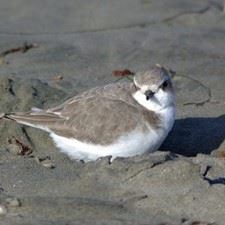|
|
Best Birding Spots at the Refuge By Rebecca Lexa The Refuge is a fabulous place to enjoy a diversity of birds. The variety of habitats leads to more biodiversity, and each location may offer something unique. As spring migration begins, winter waterfowl leave and summer residents arrive to find food and shelter and raise this year’s crop of young birds. While there are many good places for birding, here are a few favorites: Tarlatt Unit: You don’t have to leave the trailhead to see some native birds. Tree Swallows use the nest boxes along the access road, and Kestrels often hover over the meadow looking for prey. If you walk east along Tarlatt Slough, you might see a Great Blue Heron, Double-crested Cormorant, or Caspian Tern fishing. If the tide is out, you are more likely to see shorebirds hunting for food in the mud flats. This unit offers a bird blind that looks out onto a meadow where you might see Cedar Waxwings, other songbirds, Red-tailed Hawks, and Turkey Vultures. To access the blind, walk about ¼ south from the trailhead at 95th Street, or drive to 85th Street and park by the metal gate on the road’s north side. The blind is a couple hundred feet north from the gate. Leadbetter Point: By spring the trails are drying out from winter flooding. The Bearberry Trail connects both the ocean and bay sides of this unit. Watch for shorebirds when the tide is out; look up to the trees along the bay and you may see a Great Blue Heron Rookery, or a Bald Eagle. Watch for songbirds as you walk along the trail, and at the ocean keep your eyes peeled for the rare Western Snowy Plover.
|



